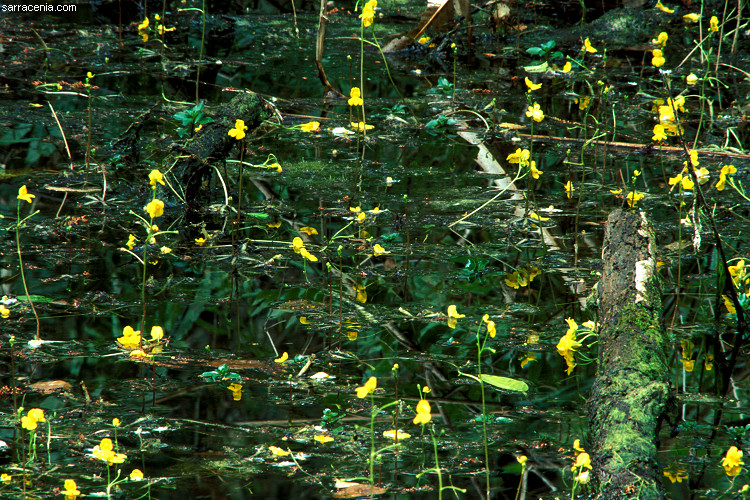
Size matters:
The sets of radial floats on these
plants were only about 5 cm (2 inches) in diameter. This is way too small
for Utricularia inflata. I revised my guess and decided
they were
probably Utricularia radiata! I had never before seen
Utricularia radiata, so spotting it was a real buzz! However,
to verify
the identification, I would need to get some plants into my hands to
look at some subtle, minute characters (students of Taylor's monograph
will know what I mean when I refer to
"secondary leaf segments" or "bifid corolla spurs").
Alas, since I was on a boardwalk, I could not venture close enough
to grab plants
(without setting a very bad example), so I could only stare longingly at
these enticing plants.
I think my excitement must have been obvious, because as I was putting
long lenses on my camera, and peering with binoculars into the water,
I developed a small circle of curious
tourists. "Watcha got? A gator?"
My explanation that I was looking at the plants was met with the usual
mix of disbelief and pity.
Incidentally, these plants were growing
in darker conditions than what I am used to. Indeed, on this partly sunny
day, and with Velvia at F22, I needed to shoot exposures
6-10 seconds long.
Ultimately, I was about 80% sure these plants were
Utricularia radiata. Even so, I could not be sure. So with the
sun setting, and itching with furious curiosity, I shuffled back to my
car.